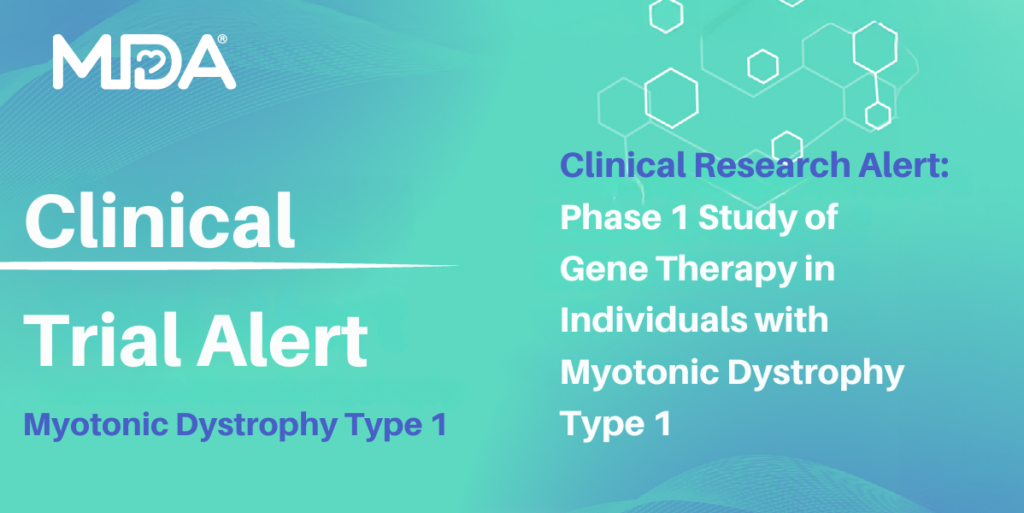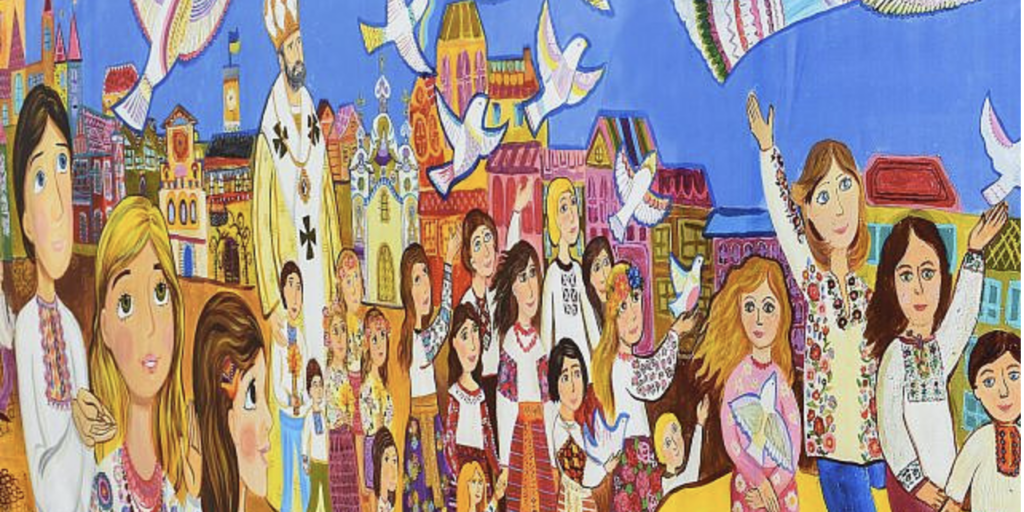
For Ukrainians with Rare Diseases, Life is Still a Struggle
By Larry Luxner | Wednesday, March 8, 2023
February 28 marked Rare Disease Day — an annual event calling attention to the 300 million people worldwide who live with one or more of the 7,000 illnesses classified as rare, which includes all neuromuscular diseases.
February also marked one year since Russia invaded Ukraine, launching a war that has killed tens of thousands of Ukrainian civilians and forced millions from their homes.
What does this mean for the estimated 2 million Ukrainians with rare diseases and their families?
Their lives have suddenly taken a turn for the worse across this country of 40 million, which was already Europe’s poorest before the invasion began.
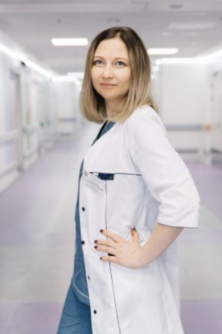
Dr. Nataliia Samonenko is head of orphan diseases and gene therapy at Kyiv’s Okhmatdyt, the largest children’s hospital in Ukraine. (Photo courtesy of Okhmatdyt)
Nataliia Vyacheslavivna Samonenko heads the Center for Orphan Diseases and Gene Therapy at Okhmatdyt Children’s Hospital in Kyiv. In normal times, the hospital — the largest of its kind in Ukraine — can handle up to 600 patients.
But since the war started, both patients and staff have been forced to take refuge in the basement to avoid shelling, she said. Now, only lifesaving surgeries are being performed because of shortages of drugs and medical supplies.
“In fact, the situation for rare disease patients in Ukraine has never been ideal,” Dr. Samonenko wrote in an email from Kyiv. “Yet over the last 10 years, their quality of care has grown significantly, and treatment with expensive drugs was often available. Maybe that’s why the start of a full-scale invasion was such a disaster.”
Since the start of the war, many patients have not been able to get to the hospital. Others have fled to countries like Poland and Germany, where they can access specialized clinics.
Refugees return to Ukraine
For those who stayed in Ukraine, “the government has not refused to support them even now, already a year after the war,” Dr. Samonenko said. “Medicines continue to be purchased, and hospitals continue to function, though adjusted for missile attacks, alarms and sirens, and no electricity.”
Many of these patients adapted to the conditions or moved to safer areas within Ukraine. However, over the past few months, Ukrainians who fled have been returning for various family, economic, or psychological reasons.
“According to our calculations, only 30% of all patients remain abroad — mainly oncology patients or those who need organ transplants,” she explained. “And what about those with spinal muscular atrophy (SMA) or achondroplasia, for example, who got access to medicines not available in Ukraine? Many of these people have left their homes and have nothing at all: no money, no belongings, no relatives. Is it easy to start life anew in such a situation? I doubt it.”
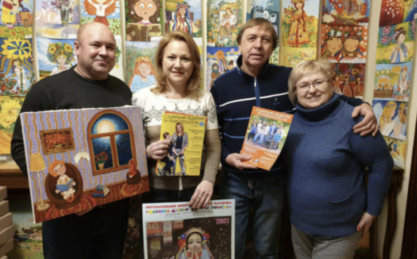
In happier times (from left), Serhyi Yashchenko, Margarita Yashchenko, Mykola Tsukanov, and Svitlana Sysoeva promote an international children’s art competition to call attention to Duchenne muscular dystrophy. (Photo credit: Duchenne Ukraine)
SMA, an inherited disorder characterized by muscle atrophy and weakness, is a disease whose patients sometimes require round-the-clock care. Yet several new therapies — all of them extremely expensive — can slow or stop the progression of the disease. Likewise, it is believed that the new $2.1 million, one-time gene therapy Zolgensma® can prevent SMA symptoms from developing if given early in life.
Dr. Samonenko said it’s equally hard for patients who need special devices like oxygen concentrators or even common equipment like wheelchairs.
“It is impossible to cover absolutely everything and everyone in this situation,” she said. “The maximum resources of the entire country are thrown into defeating the aggressor. But patient organizations often discover miracles. Volunteers even deliver medicine to the occupied territories — and I consider them heroes.”
Ukrainian families in Poland for treatment
Kacper Ruciński, co-founder and former president of Warsaw-based Fundacja SMA (SMA Foundation Poland), is one such volunteer. Within 72 hours of the initial Russian attack, he and other volunteers launched a trilingual (Polish, Ukrainian, and Russian) website, an online registration system, and a dedicated telephone line to advise Ukrainian families on the best route to Poland.
Fundacja SMA also finalized documents, organized transport across the Polish-Ukrainian border, arranged temporary accommodation, supplied medical equipment, and helped families receive medical care once they arrived in Poland.
“This was a 24/7 operation, extremely demanding and also emotionally draining,” Ruciński said. “Just imagine trying to help parents of a child on a ventilator stuck somewhere near the border with no access to electricity and no roof over their heads; or a man or woman who are wheelchair users whose town is being bombed and who has no chances for a wheelchair-adapted means of transportation.”
But the group persisted, and within six weeks, they got 150 Ukrainian families to Poland and other European countries. More than half of the roughly 350 Ukrainian families affected by SMA now live in Poland, where they’re safe and can freely access medical care unavailable in Ukraine.
As a result, the number of children and adults living with SMA in Poland has jumped by at least 20%, to around 1,100.
Late last year, Ruciński’s foundation started a project named Equal Opportunities that ensures Ukrainian SMA families have a long-term place to stay in Poland, as well as all necessary medical equipment and access to orthopedic and physical therapy. Since the project started, the charity has helped 37 such families with grants totaling 32,000 euros.
“We’re happy to observe that this is making a real difference for them,” he said.
Determined parents keep kids safe
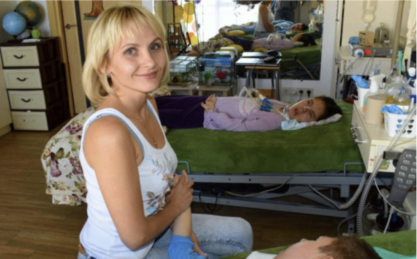
Nataliya Radysh of Lviv, Ukraine, cares for her two children, Sofijka, 13, and Lukyan, 11. Both of whom have SMA type 1. (Photo by Larry Luxner)
Nataliya Radysh knows all too well what living through this war has been like. A divorced mother, she shares her ninth-floor apartment in Lviv with her 14-year-old daughter, Sofijka, and 12-year-old son, Lukyan. Both children have SMA type 1 and use wheelchairs; neither can hold their heads up or sit on their own. The bedroom they share looks like a hospital intensive-care unit, with ventilators, pulse oximeters, inhalers, suction devices, and plastic tubes.
For several months, Lviv — in extreme western Ukraine, near the Polish border — was relatively safe. But after that city came under Russian missile attack, Radysh realized she could no longer stay, and she too fled to Poland with her kids. After several months, though, they returned.
“Sofijka has a lot of anxiety, panic attacks and subclinical depression, and I have difficulties with babysitters,” she said. “Because of this, I have great physical fatigue. My body does not have time to recover. I am silent about the war, about the alarms, about power cuts, because I have adapted to it. But among all the difficulties, I find positive moments. I focus on them and do not give up.”
Not far away, Karina Pietoian and Yuriy Galyulko watch carefully over their 8-year-old son, Eldar, who lives with DMD. Along with their 3-year-old daughter Margarita, they inhabit the third floor of a 19th-century brick building in the center of this medieval provincial capital.
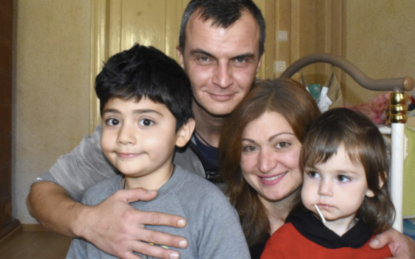
Yuriy Galyulko and Karina Pietoian with 8-year-old son Eldar, who has Duchenne muscular dystrophy, and their daughter, Margarita, 3, at home in Lviv, Ukraine. (Photo by Larry Luxner)
Vitaliy Matyushenko, who lives in the badly damaged city of Kharkiv — only 35 kilometers from the Russian border — has a daughter with SMA, 19-year-old Yuliya. Days after the war broke out a year ago, she found herself huddled in a bare concrete basement in Kharkiv as her family prepared for another missile attack.
Matyushenko, a physicist, established the nonprofit CSMA Foundation in 2004 along with his mathematician wife, Svitlana, after their daughter’s diagnosis. He said Yuliya depends on risdiplam (Evrysdi®), a liquid taken once a day by mouth or feeding tube, and obtained through the compassionate use program of Swiss pharmaceutical giant Roche.
Yuliya is one of 80 Ukrainian patients who’d been receiving risdiplam from Roche for years. But now, Ukraine’s cash-strapped Ministry of Health has decided to reimburse for the drug only for children under 5 with SMA. A lack of access to this lifesaving medication could lead many of the remaining patients to leave, said Matyushenko; the matter is currently in legal proceedings.
Before the war, many of Ukraine’s 300 to 400 SMA patients were being treated with nusinersen (Spinraza®) — a Biogen drug that retails for $375,000 a year — but the few hospitals in Kyiv that offered those costly infusions have since shut down.
A Ukrainian doctor in California
It’s not only the patients who have fled. So have many of the highly trained physicians who treated them.
Dr. Iryna Zhyvylo, 40, had been caring for about 400 of Ukraine’s 679 patients with pulmonary hypertension at Kyiv’s MD Strazhesko Institute of Cardiology. But in the past year, about 75 of them — including 15 children — have fled the country.
“When the war began, I was very afraid and just stayed in my house. After a week, I took my daughter and we went to Poland,” she said. “There, I helped patients who had also left. After Poland, my daughter and I lived for five months with a host family in Monza, a small town near Milan, with the help of Pulmonary Hypertension Ukraine Rare Disease Association (PHURDA). I worked at a PH center there as a volunteer because it was difficult to find work in Italy.”
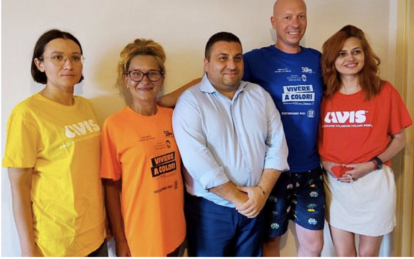
Dr. Iryna Zhyvylo (at far left) with members of the Pulmonary Hypertension Ukraine Disease Association in Milan, Italy. (Photo courtesy of PHURDA)
Eventually, Dr. Zhyvylo landed a position as a postdoctoral researcher at the University of California, Davis, near Sacramento, where she has a contract through August 2024.
“The situation for rare disease patients in Ukraine is very bad today. Our Ministry of Health cannot help these people. Some countries such as Poland have given us humanitarian assistance, but it’s not enough for my patients in Ukraine. They need to use oxygen all day, but it’s difficult when you don’t have electricity.”
Pulmonary hypertension patients in the United States often use battery-powered portable oxygen concentrators, she said, “but we don’t have them in Ukraine because they’re so expensive. Before the war, patients could buy a concentrator for around $5,000. Another problem is that there’s only one PH center in all of Ukraine, and it’s too difficult to go to Kyiv because the logistics are so bad. Patients are afraid, and transport is a big problem.”
But perhaps the biggest challenge for Dr. Zhyvylo and her patients is the scarcity of drugs to treat their disease. In the United States, doctors can prescribe any of 14 FDA-approved therapies for PH, while in Europe, 10 such therapies are available. In Ukraine, only four are available.
“A lot of my patients in Europe are receiving good treatment now — drugs such as macitentan, selexipag, and riociguat — but they don’t know what to do in the future,” she said. “We’re speaking with our Ministry of Health to find some options for these patients. Otherwise, when they return, they could die.”
Disclaimer: No content on this site should ever be used as a substitute for direct medical advice from your doctor or other qualified clinician.




